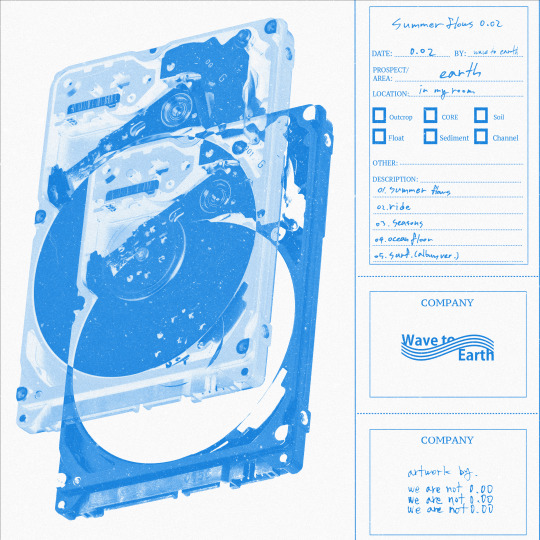#summer flows 0.02
Text
147 notes
·
View notes
Text
you are ma city • 🏙
2 notes
·
View notes
Text
recently came across this band, and this album single-handedly threw me back into my early teens. i love indie. i love the way it makes me feel + groove.
0 notes
Text
summer flows 0.02
summer flows 0.02 - danielle marsh x 6th member! reader




status: charging
synopsis: you thought you knew dani. but guess you were wrong.
tags: angst, really bad writing, cursing, friends to strangers to lovers??, secret pining, fluff, crack, strong language, a semi linear timeline, misunderstandings
updates? December 21st.
context: same yn in wave
profiles: choi y/n
trailer: TBD
characters: itzy and the choi's, blue pants (minus y/n), the witnesses
00. prologue (ft newjeans)
01. purple lake
02.
...

taglist:@technicallyimportantsweets @awkwardtoafault @skisk1

a/n: uh if you want to be added to the tag list just comment or send a ask 👍
#danielle marsh x reader#danielle x reader#danielle imagines#newjeans x reader#newjeans imagines#newjeans smau#summer flows smau
137 notes
·
View notes
Text
love is a mixtape.

hi, i'm mai. 22. filipino. she/her. diary.

current happenings: writing practice!!! (note: sorry if seem to follow you then unfollow you then follow you again idk what's happening tumblr's beint weird on my end)

fave fics.
fic recs.
thoughts on fics
writing

*media: love is a mixtape by rob sheffield, beatopia by beabadoobee, summer flows 0.02 by wave to earth (header)
2 notes
·
View notes
Text
#just found this super cute song#i love the part where he goes higher with his voice it's just so magical#totally recommend other songs of his too#this song reminds me of summer and just fresh and pure vibes#lu being in love with music😌#Spotify
2 notes
·
View notes
Text
Iris Publishers - Global Journal of Engineering Sciences (GJES)
Air Conditioning Booster
Authored by Ehab Nader Tuffaha

Abstract
The study trying to utilize and allows to harness the natural and free solar energy gotten from the sun by converting the additional free enthalpy gotten as thermal and kinetic energy likewise into useful power; on other words the main concern is increasing the COP.
This type of AC will use as much solar energy as is available and convert the solar energy directly to replace the equivalent amount of AC power from the mains provider. Under optimum conditions, this can save up to 25% – 45 % of your mains power usage during the summer.
This will be most recent innovation in standalone power saving which is partially free of charge by the Sun.
The study aims to renovate the traditional refrigeration system which is normally known as compression refrigeration cycle everywhere in our buildings, so that it can be developed to take advantage of the free solar energy without complicated changes neither a completely demolishing.
Keywords: HVAC; Solar radiation; R 134a; Thermodynamics; Momentum
Introduction
Jordan is among of the most enthusiastic developing country to promote utilization of renewable energy, as very well known the solar radiation in Jordan average within 4500 Wh/m2 to8000 Wh/ m2.
More than 300 sunny days in Jordan driving us to think more seriously in renewable energy resources and somehow reduce dependence on oil consumption.
Basic thermodynamics statement that as a greater temperature difference between substances the faster heat flow, so once the refrigerant gas temperature increased then a heat rejection is higher; same what happened when the ambient temperature increases, less heat can be rejected from the air-cooled condenser to the hotter ambient.
Adding an extra heat to the cycle in order to increase ΔT between condenser and surrounding environment. Not quite, but the future will be for renewable energy, however the first step should be renovating the transition phase of the hybridized types by paving the way for the renewable sources, as there is no doubt that renewable energy does not match in any way the traditional energy that we are accustomed to in term of cost neither the required efficiency.
Methodology
Heat transferee calculations:
a) Qh = mh x Cph (Thou t-Thin) Versus b) Qc = mc x Cpc (Tc out-T c in)
Equation a here represent water system versus equation b for refrigeration cycle.
Where Q = heat energy (Joules, J) m = mass of a substance (kg) c = specific heat (unit’s J/kg∙K) Δt is a symbol meaning “the change in” temperatures
Tcout = Outlet refrigeration temperature from heat exchanger.
Tcin = Inlet refrigeration temperature from heat exchanger.
Thin = Water Inlet temperature from the solar collector to heat exchanger.
Mpemba Effect on the Refrigeration Cycle
The basic advantage is a quicker phase change from gas to liquid leading to a better sub cooling and that to less flash gas then more cooling capacity at the evaporator and with the control of the unit then to the original cooling capacity at the evaporator but with less compressor work. All the known formulas in thermodynamics can’t explain, because there is really none for the phase change except the amount of heat transferred at phase change.
We gain here 15 KW using our selected heat exchanger); Now a gas coming from a higher temperature has a much higher kinetic energy of the molecules and they kick much more into them as a result they can develop much quicker the interconnecting Vander Waals forces and as a result they liquefy quicker. Since the gas gets quicker liquid, the remaining way in the condenser is used to cool down the fully liquid further.
Where a & b are dimensions to be experimentally found. p = pressure, n= number of moles, T = temperature, V = volume and R = universal gas constant. Hence Its value will be nearby to general gas equation the given gas is at low pressure and high temperature.
PV = nRT; V = As x L, as the selected exchanger is 0.311m height,
P @ 90 C = 10 bar = 9.9 atm; V= 0.5 m3
R = 0.082 lt. atm /deg.k.mole
10 x 0.5= n x 0.082x 363
So n= 0.2
However as very known from
P1V = n1RT …; P2V = n2RT … Considering the volume is constant (Isochoric) as the heat exchanger is a small closed tank so: P2 X 0.5= 0.2 x 0.082 x 363 k ; So P2 =12 bar
Discussions and Ideas
Based on the below equations and numbers, a rapidly increasing in momentum during of heating the refrigerant gas R 134a:
As an estimation each pressure drop in heat exchanger 4m/ 100m and we have a 10 meters pipes so we have a 0.4 bar =4079 kgf/m2 (kg per sq. meter); let us multiply the factors as below:
0.2 kg/s (refrigerant flow rate) x 4079 kg/m2 x 0.02 m3/kg (specific volume @ 40 c & 2 bar) = 16 kg.m/s
This unit is a momentum, so let us try to get the momentum @ 90 c & 10 bar:
0.2 kg/s (refrigerant flow rate) x 4079 kg/m2 x 0.3m3/kg (specific volume @ 90 c & 10 bar) = 245 kg.m/s.
This is mean each change in momentum is a new specific impulse on other words this is producing a thrust force which is also a gain for the cycle.
Conclusion
• The system clearly shows that COP is increased from 4.3 to 5.5, by converting solar thermal energy to sub cooling additional for the refrigeration cycle.
• The system adds more 2 bars to the refrigeration cycle consequently increasing in the entropy as mean a quicker phase change due to quicker set-up of intermolecular bindings because of v Van der Waals forces yielding additional sub-cooling.
• The most important is we don’t have to increase condenser surface. It is very well capable to remove the additional heat, the Formula Q = alpha X surface x delta T. Alpha is heat transfer coefficient and does not change, If Delta T increases due to higher temperature of the refrigerant entering the condenser, the condenser just transfers more heat. The environment as the heat absorbing media is capable of taking up that additional heat. For more explanation, let say what happened with radiators: if you flush water with a temperature of 45 °C through the radiator, it does not provide that much heat as if you flush water through with a temperature of 90 °C so the radiator is capable of doing the job.
Basically W (KJ/Kg) = ∫p*dv, however the dv in heat exchanger considered zero by other words it’s an Isochoric Work When V is held constant and P changes W = 0 Because gas is not doing any work but as surrounding adds energy to internal energy of gas That’s why Cp is always greater than Cv Specific heat capacity at constant pressure is always greater than Specific heat capacity at constant volume, now once the gas goes through the condenser a quicker phase change occurred there cause When gas expands it has to do work to push environment to create space for its expansion by spending energy from its internal energy that’s why suddenly Gas cools down.
Addendum
Data Analysis
The below study shows if reduce refrigerant up to certain limit could be useful for COP, however should we not reach to the maximum temperature of 120 c which is the critical temperature, however power consumption is reduced accordingly (Table 1).
The below are a figure out and illustrations using Mollier diagrams which is a very common for systems with fixed compressor speed = fixed mass flow. DC Inverter units with variable mass flows and many changes in circuit offer wide range of mollier diagrams will be a high improvement for the proposed system .
To read more about this article https://irispublishers.com/gjes/fulltext/air-conditioning-booster.ID.000612.php
Indexing List of Iris Publishers: https://medium.com/@irispublishers/what-is-the-indexing-list-of-iris-publishers-4ace353e4eee
Iris publishers google scholar citation : https://scholar.google.co.in/scholar?hl=en&as_sdt=0%2C5&q=irispublishers&btnG=
1 note
·
View note
Link
Exxon is facing a climate rebellion it may be unable to put down The stakes couldn’t be higher. If successful, the campaign could force Exxon (XOM) to shift its strategy by diversifying into renewable energy and pulling back on oil production. And it would send a loud message to other fossil fuel companies at a time when the International Energy Agency has warned the world needs to immediately stop drilling for oil and gas to prevent a climate catastrophe. The Engine. No. 1 campaign, which has received support from prominent investors and shareholder advisory firms, is a milestone in Corporate America. It’s the first proxy battle at a major US company in which the case for change is being “explicitly constructed” around the shift away from fossil fuels, according to Institutional Shareholder Services. Stumbles opened the door to rebellion Critically, this fight with activists comes after a period of dismal performance for once-mighty Exxon. The world’s most valuable company as recently as 2013, Exxon has lost nearly $200 billion in market capitalization since its peak. It had enjoyed an unbroken run as a member of the Dow Jones Industrial Average from 1928 until it was kicked out of the exclusive index last summer. During the five years prior to the pandemic, Exxon’s total return (including dividends) fell by 17.5%, according to Engine No. 1. That was easily last among the five biggest oil companies over that span, with Exxon the only one suffering a loss. The S&P 500 surged nearly 80% during the same time frame. However, Exxon has rebounded in 2021 as oil prices have climbed. The share price is up 41% this year, nearly quadrupling the S&P 500’s advance. Still, Exxon remains far from the record highs hit in mid-2014. ‘Questionable strategy’ Engine No. 1 argues the climate crisis poses an existential threat to Exxon — one the company hasn’t taken seriously enough. Unlike BP, Royal Dutch Shell and other European oil majors, Exxon has doubled down on oil and gas despite growing concern about the climate crisis. “A refusal to accept that fossil fuel demand may decline in decades to come has led to a failure to take even initial steps towards evolution, and to obfuscating rather than addressing long-term business risk,” Engine No. 1 wrote in its investor presentation. Institutional Shareholder Services has advised shareholders to vote in favor of three of Engine No. 1’s candidates. Citing Exxon’s “questionable strategy” for the future and “diminishing returns,” Glass Lewis, another influential advisory firm, urged shareholders to back two of the four candidates. “We believe Engine No. 1 has presented a compelling case that, without a more concerted response and well-developed strategy … related to the global energy transition, Exxon’s returns, cash flow and dividend, and thus its shareholder value, are increasingly at threat,” Glass Lewis wrote in its report. Big Three hold the key Engine No. 1 holds just 0.02% of Exxon’s shares. However, the hedge fund has won backing from major institutional investors, including the New York Common Retirement Fund, the Church of England, the California Public Employees’ Retirement System (CalPERS) and the California State Teachers’ Retirement System (CalSTRS). But like most proxy fights, the war will likely be won by which side gets the support of the Big Three asset managers. BlackRock, State Street (STT) and Vanguard collectively owned nearly 19% of Exxon’s shares as of the end of March, according to Refinitiv. That’s why it’s a very big deal that Reuters reported BlackRock has voted for three of Engine No. 1’s four candidates to join the Exxon board. A BlackRock spokesperson declined to comment on the report. BlackRock, the world’s largest asset manager, is under fire itself from activists demanding it live up to its own climate promises. The campaign is being led by BlackRock’s Big Problem, a coalition that includes the Sierra Club, Rainforest Action network and Friends of the Earth. “We question whether BlackRock is ready to hold the biggest oil and gas polluters — and their financiers — accountable. Anything less is lipservice — and greenwashing,” Roberta Giordano, one of the organizers, wrote in a memo on Monday. Exxon promises to keep refreshing its board Exxon has defended its strategy by pointing to projections for continued demand for oil and natural gas, particularly in emerging markets. The company has also pointed to efforts to reduce emissions and invest in carbon capture and storage as well as hydrogen. Exxon has estimated carbon capture alone could be a $2 trillion market by 2040. “We believe success in developing these technologies will be critical to both advancing society’s ambitions for a lower–carbon future and in delivering long-term shareholder value,” Exxon CEO Darren Woods and lead director Ken Frazier wrote in a letter to shareholders on Monday. However, Glass Lewis said it doesn’t believe Exxon “has made a compelling case” that carbon capture will become economically viable or grow to the scale required to become the centerpiece of the company’s energy transition strategy. “We’re left with the feeling Exxon isn’t doing enough in terms of preparing or investing for the future,” Glass Lewis wrote. In a sign of the pressure facing Exxon, the company also promised to add two new directors over the next 12 months, one with energy industry experience and one with climate experience. That would be on top of the six new directors that have been added since 2017. For its part, Engine No. 1 urged shareholders not to be swayed by what it called Exxon’s “cynical, last minute maneuvering.” “This is the same company that for years has refused to take even gradual material steps towards being better positioned for the long-term in a decarbonizing world,” Engine No. 1 said in a statement. Source link Orbem News #Business #Climate #Exxon #Exxonisfacingaclimaterebellionitmaybeunabletoputdown-CNN #Facing #put #Rebellion #unable
0 notes
Photo









Favorite 2020 Korean Album Releases
disclaimer: hey yall, there were a lot of great music this year and i simply cannot choose only nine so i added a cutting room floor category just for albums that could’ve make it during weaker years and are still worth checking out. album titles will be linked to spotify. enjoy, happy holidays and have a safe happy new year!
penten - mélodie bourgeois, mélodie proletariat
one of my fave alt-rock albums of the year! the vocalist has such a wonderfully rich voice and carries the songs with such panache. the tracks are soaring, hopeful, and has a large soundscape. think: oasis champagne supernova. ‘trapezoid’ and ‘fade away’ are my choice tracks from this album.
uza - banality of evil
the last thing i expected from half of the bubbly uza&shane duo is a dark narrative 80s electronic full length album. the percussion drags you under its depth, the synth melody is absolutely haunting, and uza’s delivery has palpable spite. ‘faust’ and ‘personality type 2′ are my faves. it’s tense, it’s aggressive, and it’s so good.
samuel seo - unity ii
me @ myself putting another album of his on a year end list: hoe, not again!
me: ...............😏
baek yerin - tellusboutyourself
i still have her 2019 releases on constant repeat that when she announced a new release, i thought there’s no way it’s gonna be a full album. welp. a departure from the typical singer-songwriter instruments of guitar/piano, this album draws inspiration from british garage and deep house. while her clearer singing style is opt out for more mumbling delivery (perhaps a way to evoke more casual late night talks after a few drinks), yerin’s lyrical talent is much sharper, especially in tracks like Ms. Delicate. this is gonna be a comfort album in the future for all the girlies and theydies.
soul lady - yukika
city pop perfection. what are you DOING if you haven’t listened to this album. for those of you have not, i’m giving you explicit permission to close this browser and open your preferred streaming platform and listen to this album. do it right now!
ok for those who have and agree that this is album of the year, do i need to elaborate anymore to you? for an album with 12 tracks, it manages to not overstay its welcome by interspersing slower tracks between the traditionally upbeat city pop while making each track stand out on its own. the 2:21 mark in ‘Yesterday’ is THE best usage of a pause this year.
cherry coke - every flower you gave me
this is quickly becoming a r&b house staple in my playlist with absolutely no skips. cherry coke kept it fresh with each new track: from deep house to 90s r&b ballad, this album slices and dices between genres while cherry coke’s nasal delivery stays airy and nonchalant, like she’s above it all.
ahn dayoung - antihero
from uza’s banality of evil to stella jang’s smash single ‘villain’, this has been a great year for female artists indulging in being a little sinister, as a treat. a rock album arranged by both ahn dayoung and producer glowingdog, the lyrics are surreal and have an inclination to the imagery of hands (my fave type!), especially in the track ‘Fingerprint’. the mv for ‘usual person’ is also one of the best art pieces i’ve seen this year.
e sens - marigold tapes
there are only four tracks but this album is k-hip hop at its finest. flow, beat, production are immaculate. there are no notes from me, director. keep doing your thing, e sens!
wave to earth - wave 0.01
this album’s beachside rolling rock accompanied with a little bossa nova has one of the clearest production i’ve heard all year. the tracks are romantic, feel-good, and has amazing build-up. ‘bonfire’ and ‘purple lake’ are jams. if you love this, do check out their second installment ‘summer flows 0.02′ for something even mellower.
Cutting Room Floor:
BOA’s better - the queen of kpop is back with one of the best kpop releases of the year cementing her legacy as THAT BITCH. honey & diamonds is the best kpop b-side cut of 2020.
lydia lee’s the house that i live in - a r&b jazz mini that is *chef kiss*
coremagazine’s titbit - cool ass rock album
jackingcong’s dress code - highly underrated r&b album
oohyo’s silence - when oohyo said “put an end to all of this” in the track ‘2020′? i felt that. also the 0:30 mark in ‘quite night’ is the second-best use of a pause this year.
onthedal’s ℃ dal - crystal clear production, some solid bops in this one.
code kunst’s people - a mammoth of a studio production. pick and choose your fave tracks from this album.
cosmic boy’s love in summer - an entire album collab with george??? u got me!
aseul’s slow dance - another beautiful electronic album with her signature ethereal soft voice
ye ram’s nature - a solid folk album. check it out if you like a similar styling to kim sawol
mt. fred’s escape from the cage - fun tracks with great direction
Honoroble Mentions: so!yoon! & phum viphurit’s wings, cifika’s HANA, se so neon’s nan chun, sogumm & oh hyuk’s yayou hoi, stray kids’ back door, YELLA’s maybecolorful, summer soul’s junkfood, eunoo’s 2020 singles especially door man, jack’s 2020 singles especially BOSH, ovcoco’s 2020 singles
#mines#korean indie#favkreleases#k indie#yukika#yerin baek#samuel seo#e sens#uza & shane#cherry coke#ahn dayoung#penten#wave to earth#kpop#here u guys go! as always enjoy and happy holidays and stay safe!
85 notes
·
View notes
Text
we surf like jellyfish ~ 🪼
#surf.#audio#wave to earth#indie music#k-indie#gojo satoru#🌊🌊🌊#summer flows 0.02#you know that life is like surfing anyway
1 note
·
View note
Text
Juniper Publishers- Open Access Journal of Environmental Sciences & Natural Resources

The Impact of Tropical Cyclone 'Phailin' on the Hydrology of Chilika Lagoon, India
Authored by Pradipta R Muduli
Abstract
The Asia’s largest lagoon; Chilika, designated as first Ramsar site in India, was studied after a severe cyclonic storm “Phailin” in October 2013 that was coupled with heavy precipitation and flooding. Physicochemical parameters, nutrients, and salinity data were analyzed to understand the impact of Phailin on the hydrology of lagoon. Multidimensional scaling analysis of 15 years of salinity data, revealed spatial partitioning of lagoon into four distinct ecological sectors; southern, central, northern, and outer channel. Fresh water discharge from the rivers remained a dominating factor for controlling the salinity regime of the lagoon (r= -0.2894, p= 0.0144).
A significant change in the salinity regime as well as in the nutrients was observed after the cyclone compared to the pre-cyclone months. The salinity of southern, central sectors and outer channel decreased by 28.7, 29.8, and 19.1% respectively, whereas in the northern sector, it remained fairly constant compared to pre-cyclone months. There was an overall increase in silicate concentration in the lagoon after cyclone due to riverine silicate influx evidenced by a significant negative correlation between salinity and silicate concentration in the lagoon. However, there was a decline in nitrate+nitrite and phosphate concentration throughout the lagoon mostly due to dilution effect as well as adsorption to sediment in case of phosphate. The impact of cyclone was also distinctly visible on specific biota such as sea grasses, macrophytes, and benthic community which are considered as good bio-indicators.
Keywords : Chilika; Lagoon; Nutrient dilution; Phailin; River discharge; Ramsar Site; Super cyclone; Water quality
Introduction
The Bay of Bengal region of the Indian subcontinent is well known for origin of tropical cyclones, which often turn into super cyclone before hitting the continental land mass. Most tropical regions are exposed to high intensity rainfalls associated with cyclones Summer et al. [1]. Two of the cyclonic storms had hit the east coast state of India; Odisha during October of year 1999 (super cyclone) and in 2013 (severe cyclonic storm). A very severe cyclonic storm Phailin had landfall to south Odisha coast on 12th October 2013 with a sustained maximum surface wind speed of 200-210 kmph gusting to 220 kmph (IMD Report [2]. An ecological effect of such major storms on coastal ecosystems has been studied by many researchers Bhatacharya et al. [3]; Mitra et al. [4]; Reddy et al. [5]; Satpathy et al. [6]; Webster et al. [7]. Freshwater discharge can play an important role in changing the water chemistry and hydrology of the coastal estuarine ecosystem Kanuri et al. [8]; Muduli et al., 2012 [9], Muduli et al., 2013 [10], Worldwide many studies are focused on the influence of heavy freshwater discharge (due to flood events) on water quality of coastal ecosystems; Martinez-Mena et al. [11]; Steven [12]. However, such studies in context to Indian lagoon ecosystems are lacking.
Salinity is an important factor in determining the distribution of biodiversity of flora and fauna in coastal ecosystem Benjamin et al. [13]; Mcevoy et al. [14]. For instance, benthic organisms and sea grass communities have been shown to be significantly influenced by the change in salinity and turbid water flux which occurs during flood events Gaonkar et al. [15]; Orth et al. [16]. Flux of nutrients during flooding can alter the rate of primary production in the aftermath of cyclone Murrell et al. [17]; Sarma et al. [18]. Thus, monitoring of water quality assumes high priority to understand the impact of cyclone on the hydrology and biodiversity of the lagoon.
Chilika lagoon is a highly sensitive and complex ecosystem especially due to large catchment size (3500 Km2). A variety of land-derived discharge flows into the lagoon through several rivers and their distributaries. The flood after the cyclone Phailin brought a huge amount of freshwater of different chemistry into the lagoon, which could have an adverse effect on the hydrology and water quality. As salinity and nutrients are vital parameters influencing and determining the ecology and biodiversity in coastal lagoon, these two parameters were studied in great details in relation to Phailin. The specific objectives of this study are to understand
i. The effect of Phailin on the nutrients inputs from major rivers that drain into Chilika lagoon and the influence of this input on the water quality of different sectors of the lagoon.
ii. The impact of Phailin on the salinity regime of the lagoon.
Materials and Methods
Study Area
Chilika lagoon (Figure 1) is a largest brackish water lagoon in Asia located on the east coast of India (19 28' 19 54' N and 85 06' 85 35' E). It is one of the most dynamic shallow ecosystems (average depth: 2m), about 65 km long and spreading parallel to the coastline in north east to south west direction with a varying width (reaching to average 20 km). There are 52 rivers and rivulets that drain fresh water and sediment into the lagoon. There are three inlets (showed as one in the figure, due to very small spatial distances ~300m) connected to sea through which saline water enters into the lagoon. Apart from this, lagoon through the Palur Canal (Figure 1) at the southern part of the lagoon connected to the sea, through Rushikulya estuary.
Sampling and Analysis
Sampling was carried out during September and October months of year 2013 from 30 different stations covering all four sectors: Southern (SS), Central (CS), Northern (NS) and outer channel (OC) (Figure 1). Simultaneously, samples were also collected from 11 major rivers streams that drain into Chilika lagoon. Surface water samples were collected using a 5L Niskin bottle. Nutrients [nitrate+nitrite (NO3+NO2), phosphate (PO4), and silicate (SiO2)] were estimated by nutrient auto analyser (SKALAR SANplus ANALYZER) following SKALAR methodology with the precisions of nitrate+nitrite ±0.02, 0.01, and 0.02 |imol, respectively. Temperature and pH and salinity were measured using water quality Checker (TOA DKK, WQC24). Chlorophyll-a, dissolved oxygen and turbidity data were recorded using optical sensor in the sondes of data buoys (Multi-parameter water quality sonde; 6 Series; DATA BUOY; YSI, USA) deployed at each sector set to provide real-time water quality data at 15-minute intervals. Data of 30 days before and after Phailin were considered for correlation analysis.
Qualitative and quantitative assessment of the benthic community was made by adopting stringent methods described earlier Gosner et al. [19]; Holme et al. [20]. Sea grasses and freshwater macrophyte survey was carried out after three months of the cyclone, and identifications were made using taxonomic keys described earlier Campbell et al. [21]; Kanan et al. [22]. Using float method, long-term river discharge data was recorded everyday between years 2004-2013. Average discharge data of each month was considered for calculation of nutrient flux (discharge x nutrient concentration), as samples for nutrient analyses were collected only twice a month and average values were used for all calculations.
Result and Discussion
Phailin caused a drastic change in salinity gradient and nutrients status of Chilika lagoon. The extent of which varied depended on the flow rate and concentration of nutrients in the riverine inputs.
Physico-chemical parameters
Transparency of the entire lagoon decreased by 31% except SS of the lagoon where it remained almost same due to least freshwater inflow to this sector. The transparency decreased 1.35, 1.50 and 1.41 times in CS, NS, and OC, respectively. However, such significant change between the months (September and October) was not observed during 2012 (Tables 1a &1b). This could be attributed to the inflow of turbid water from rivers as well as mixing of bottom sediment due to wind-induced wave action caused by Phailin. Since the turbid water, inflow was highest in NS (Tables 1a & 1b) (Figure 2), this sector also experienced the lowest transparency Nixon et al. [23]. The pH in SS and CS was observed to increase significantly (Figure 2), which could be due to dominating primary production though there was a decrease, in transparency (Table 1b).
The production might have contributed by re-suspended benthic algae, which have better production than the pelagic algae Annual report [24]. This phenomenon was also evidenced with concurrent increase in chlorophyll-a and dissolved oxygen. Overall pH of the lagoon remained almost same however there was a significant decrease in DO concentration observed, could be attributed to surfing of lagoon water. This observation is unlike to that observed in other ecosystem affected by cyclonic events Bhatacharya et al. [3]; Mitra et al. [4]. Before Phailin, the Chlorophyll-a concentration was 3.2 μg L-1 which increased to 4.1 μg L-1 after Phailin. chlorophyll-a also showed a positive correlation with dissolved oxygen (r=0.28, p=0.0001) indicating that increase in oxygen was due to primary production rather than by surfing of water due to heavy winds Hull et al. [25]. A strong positive correlation (r=0.71, p=0.0001) between chlorophyll-a concentration and turbidity further supported the fact that suspended particulates mostly contained Chlorophyll-a during the study period.
Salinity Variation in Chilika during the Monsoon
The salinity of the Chilika lagoon is predominantly controlled by the sea water exchange and river water discharge. Apart from these, Palur canal, which is connected to the sea through Rushikulya estuary, also raises salinity of the lagoon (Figure 1). Depending upon the freshwater influx of rivers, the salinity regimes were significantly different in each sector, which was evident from the multi-dimensional scale (MDS) plot (Figure 3). River discharge during the high-flow period was compared with average salinity ofthe whole lagoon recorded between years 2004 to 2013. There was a significant influence of river discharge on water quality of Chilika as evident from the regression analysis (r=0.2894, p=0.0144) (Figure 4). It was found that during the high river discharge period in years 2006, 2008 and 2013, the average salinity of the lagoon decreased, considerably.
The salinity recorded in monsoon (July to October) was examined and compared with recent observation from different sectors (Figure 5). Since 1999, during monsoon, the salinity of the lagoon varied between 4.6 to 11.9 with an average of 8.3, whereas during the non-monsoon period the salinity varied between 9.1 to 15 with an average of 12.7. The lowest salinity value observed during 2006 could be attributed to flood events that brought heavy freshwater discharge (Figure 3). Higher salinity of >11 during 2002, 2004 and 2005 could be due to late arrival of monsoon. The lowest salinity during 1999 was the indication of poor exchange of sea water with lagoon, which led to an opening of a new mouth during September 2000 Jayaraman et al. [26].
Spatial variation in salinity due to Phailin
The results of the present study revealed that during October 2013, the average salinity of the entire lagoon reached to a level of 1.72, which was the lowest ever recorded since 1999 for October month. After Phailin, the salinity of the lagoon decreased by 3.3 times and 4.8 times as compared to previous month i.e. September 2013 and previous year October 2012, respectively. Comparison of salinity of October 2013 with September 2013 indicated that the salinity of the NS remained almost same, whereas in OC maximum decrease in the salinity was observed. The decrease in salinity of SS, CS and OC was observed to be 7.1, 2.3, and 8 times respectively ((Figure 2)) (Table 1b). The decline in salinity was not only due to the freshwater riverine discharge but also from the massive rainfall after Phailin. The level of salinity decreased in October 2013 in following order: OC>SS> CS> NS as compared to the average values of October months of last 14 years (since 1999 to 2012) and the magnitude were 7.95, 2.47, 1.93, and 1.29 times, respectively. Since last 14 years, during October, average salinity in the OC, SS, CS and NS were 8, 8.8, 2.4, and 1.4 respectively. However, after Phailin, average salinity in the in the OC, SS, CS and NS decreased to 1.02, 3.56, 1.24, and 1.08, respectively. After Phailin, the salinity in SS and OC was found to be the lowest ever recorded in last 15 years, though there was a natural opening of a new mouth during the Phailin (Forest beat house) about 1 km northward to an earlier existing mouth at Gabakunda. The resultant all time low salinity in the lagoon could be attributed to unidirectional freshwater flow (from lagoon to sea) at the mouth.
Effect of Nutrient Flux from Major Rivers
There was a significant decrease in river nutrient concentration (except silicate) which caused dilution of nutrient concentrations in the lagoon (Table 1b) (Figure 2). A number of studies have reported high variability in the concentrations of these nutrients due to freshwater discharge Acharya et at. [27]; Bond et at. [28]; Sarma et at. [29]. After the Phailin, PO4 concentration in the lagoon showed 2.9 times decrease whereas silicate concentration increased by 2.94 times; being highest in NS and lowest in CS. There was a decrease in nitrate concentration (Table 1) observed after could be due to dilution effect however the increase in nitrate concentration has been reported for other ecosystems such as, Kannada coast Reddy et at. [5], Kalpakam Satpathy et at. [30], southwest coast of India and Sunder ban mangrove wetland ( Bhattacharya et at. [3]. In contrast, few studies have also reported no significant changes in the concentration of dissolved P with change in environmental conditions Meyer et at. [31]. However, the total fluxes of all nutrients were found to be increased 3.8 fold due to Phailin induced heavy rainfall. Total nutrient flux from the Mahanadi catchment contributed ~85% as compared to the western catchment (Table 2). During 2012, the variation in nutrient concentrations between September and October months was not significant (ANOVA, p > 0.05) but in 2013 it was found to be highly significant (ANOVA, p<0.05) indicated drastic changes in water chemistry due to cyclone.
Consequences of changes in water quality on biodiversity
Due to sudden fall in salinity decomposition and decrease of rich sea grass meadows of Halophila ovalis was observed. While, the appearance of freshwater weeds such as Chara sp. and Naja sp. in most parts of the SS could be considered as an effect of changes in salinity regime of the lagoon due to cyclone. Halophila ovalis is highly productive over a salinity range of 15 to 35 and can withstand salinity <10 up to one month Benjamin et al. [13]. Thus, the reduction in salinity after Phailin did not favour Halophila ovalis growth but promoted the proliferation of freshwater weed species. A significant variation in the macro benthic group composition and decrease in abundance were also observed after the Phailin which could be due to sudden drop in salinity and increase in turbidity in the water column Alongi et al. [32]; Murrel et al. [17] (Table 1b).
Among the macro benthic groups, benthic amphipod was found dominant in November 2013 while during the previous year, polychaetes group were dominant [33]. There were number of small juveniles of polychaetes and amphipods were noticed and their biomass was comparatively higher than the previous year (October 2012). This could be due to the presence of more molluscan species. Overall the benthic biomass and abundance was decreased from 44 to 40 gm m-2 and 365 to 241 nos. m-2 respectively after Phailin. Change in the dominant group indicated the possible influence of super cyclone Phailin on the bottom substratum of the Chilika lagoon.
Conclusion
The present study reported the immediate changes in water quality of lagoon due to Phailin such as increasing silicate concentration and dilution of PO4 and NO3+NO2. The salinity of the lagoon, remained lowest in SS and OC compared to last 15 years of record. The overall decrease in salinity and turbidity resulted in loss of sea grass meadows and proliferation of freshwater weeds as well as changes in benthic communities. The present study could be treated as baseline information for further research especially on the changes in water quality and diversity of zooplankton, phytoplankton, and benthic macro fauna after the cyclonic storm. The long-term study on these aspects will be helpful for understanding the recovery period and resilience of the coastal lagoons from such extreme weather events. This data and knowledge would be useful in modelling studies to predict the health of an ecosystem and accordingly management action could be planned to restore the ecosystem balance. As due to climate change the frequency of the extreme weather events like cyclone are likely to be exuberated.
Recommendations
Chilika lagoon, a shallow brackish water lagoon with an average depth of ~1.5 m is influenced by high seasonal fluctuation in water inflows and evaporation, changing its volume, significantly. This decides the residence time of water with nutrients influencing the biogeochemistry of the entire lagoon. High precipitation induced by severe cyclonic storm suddenly changes the water quality which ultimately has an adverse effect on the balance of an ecosystem. The change in water level is likely to affect important littoral macrophytes- lined fish spawning and nursery zones and important habitat for benthic fauna and pelagic component. Water quality of an aquatic ecosystem is a crucial indicator to understand the ecological health. The change in water quality has an immediate effect on the phytoplankton followed by zooplankton and fisheries. Hence, studies must be extended to plankton and their influence on the productivity and fishery diversity. In shallow ecosystem, during cyclonic events, heavy precipitation with river discharge also change the sediment texture and composition which might affect the benthic community structure. Thus long-term studies to understand the recovery period of the ecosystem (in terms of salinity, nutrient level, plank tonic structure, sea grass, benthic communities and fishery) is essential for the sustainable management, lake productivity, perpetual ecosystem services and biodiversity of the lagoon.
For more articles in Open Access Journal of Environmental Sciences & Natural Resources please click on: https://juniperpublishers.com/ijesnr/index.php
#More About Juniper Publishers#Atmospheric Science#Climatology'#human ecology#Pollution#Juniper Publishers Journals
0 notes
Photo

새롭게 돌아온 wave to earth의 두 번째 EP [summer flows 0.02] 발매 인터뷰
https://www.genie.co.kr/magazine/subMain?ctid=1&mgz_seq=8779&pg=1
0 notes
Link
The month of May is traditionally considered bad for equity markets in Europe and the US, as fund managers typically go on a long summer vacation. Back home, the outcome of the ongoing general elections, corporate results, oil prices and rupee level are some of the key factors investors will monitor closely at a time when the indices are trading close to all-time highs.
In the past 10 years (since 2008), the S&P BSE Sensex has given a positive return on seven occasions. In 2009 the index rallied 28 per cent post election when the outcome saw the United Progressive Alliance (UPA) government take charge for the second consecutive term. May 2014 also saw the S&P BSE Sensex gain 8 per cent after Narendra Modi-led National Democratic Alliance (NDA) got an overwhelming mandate post the general elections.
So, should you ‘sell in May and go away?’
Indian markets, experts say, are already pricing in a victory for the Modi-led NDA in the ongoing general elections, albeit with a reduced majority. Given this backdrop, analysts say that long-term investors should stay put in the markets, but should brace for volatility.
“The market has high hopes about some of the structural issues being fixed by the new government post the ongoing general elections. However, the outcome of national elections may be less relevant from the perspective of next-generation reforms even though the election is very material from the perspective of the market,” wrote Sanjeev Prasad, executive director and co-head, Kotak Institutional Equities in a recent co-authored report with Sunita Baldawa and Anindya Bhowmik.
“The outcome of general elections (good or bad versus market expectations) may have limited bearing on state-level reforms. The Indian market seems reasonably confident about the BJP forming the next government, albeit with fewer number of seats,” he added.
Thus far in calendar year 2019 (CY19), markets have rallied over 8 per cent on the back of strong overseas flows.
The sharp run up has made Jayant Manglik, president – retail distribution at Religare Broking, cautious on the road ahead. “We reiterate our cautious view on markets and suggest focusing on trade management. Among the sectoral indices, pharma and information technology (IT) pack look strong, while metal and media counters may continue to underperform,” he says.
At the index level, experts do not rule out a swing of 2 – 3 per cent as the election outcome day nears. At the sectoral level, fast moving consumer goods (FMCG), capital goods and healthcare sectors, Jimeet Modi, founder and chief executive of SAMCO Securities & StockNote, says are mostly likely to trade sideways with very little volatility. On the other hand, realty, mid-cap, auto, metal, power and small-cap, he says, are in a corrective mode and a further downward pressure going ahead cannot be ruled out.
“Investors must not rush into the markets in this indecisive phase and go shopping, not at least till May 23 when the election results come out. A decisive breakout above 11,900 for the Nifty50 will signal resumption of an uptrend. However, in order to protect the long positions, one needs to keep a stop below 11,500 levels, which can take the market much lower if such lower support is broken,” Modi of SAMCO says.
MARKET MAY-HEM
Date Sensex chg (%) Nifty chg (%)
May-08 -5.0 -5.7
May-09 28.3 28.1
May-10 -3.5 -3.6
May-11 -3.3 -3.3
May-12 -6.4 -6.2
May-13 1.3 0.9
May-14 8.0 8.0
May-15 3.0 3.0
May-16 4.15 3.95
May-17 4.10 3.40
May-18 0.46 -0.02
Compiled by BS Research
0 notes
